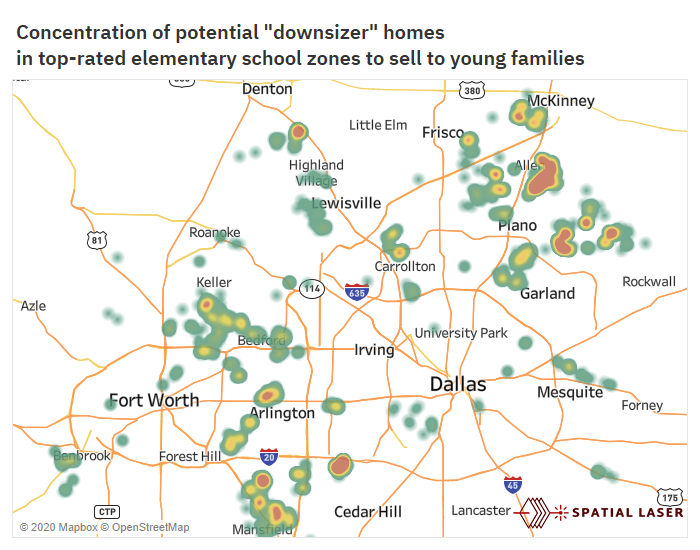In recent months, single-family home sales in core Dallas-Fort Worth counties were down 27% compared to a year earlier. Homebuyers are facing growing frustration finding homes to buy, as the number of listings at the start of May was off by a third from the same time in 2019.
Before the pandemic, the Dallas-Fort Worth area already had low inventory on the market, as the area experienced year after year of rapid growth. Now, this situation has gotten worse, as even fewer houses are available.
Inventory in the low-end of the market has been limited for a few years as employment opportunities in the Dallas-Fort Worth area surged. Buyers snapped up any low-priced homes that became available. With the pandemic, listings have become scarce, yet demand has hardly disappeared.
A tight market gets even tighter
Inventory is measured by the number of months it would take to sell all of the current listings on the market. A figure around 5 or 6 months of inventory is considered “balanced”, while less than 3 months is considered quite tight. In tight conditions, sellers usually have the upper hand, and homes on the market sell quickly.
Inventory in the market fell from 2.5 months at the start of February to only 2.1 by May. The drop was most pronounced for low-priced homes under $300,000, which experienced a drop from 2.1 to only 1.5. That means that while 8,000 such homes were listed on the market in February, that number had dropped to 5,300 by May.
It’s getting harder to find a home
In tight conditions, sellers usually have the upper hand, and homes on the market sell quickly. To get a home under contract, a buyer may need to act within just hours, not days, upon viewing a home.This means that despite the COVID outbreak, it has actually gotten harder to find a home. It also harder for agents to find enough listings to sell to keep up with demand. The areas with the lowest inventory are shown in light green below, which essentially covers most of the Metroplex. The exceptions, where inventory is higher, tend to be in the higher-priced neighborhoods along the Dallas North Tollway corridor.
Roughly three-quarters of the Metroplex has experienced an inventory drop, by our calculations.
Homes are more scarce in top school zones
Highly desirable areas have had it worst. High-scoring elementary school attendance zones have even less inventory than those with average-performing schools. For homes in the 200-300k range, for example, that feed into high-scoring elementary schools, there is only 1.69 months of inventory.
…but inventory is dropping faster in the weaker school zones
We also noticed that in the last 90 days (Feb 2 to May 2, 2020), the lesser-performing school zones actually had a bigger drop in inventory. In many cases, these are areas where more jobs have been lost due to the pandemic, as the local employment mix leans more towards hourly wage jobs. Due to economic challenges, there is less mobility and therefore fewer listings offered on the market. In contrast, sellers in high-performing school zones are less exposed to pandemic-related job losses, and also, due to the desirability of these locations, sellers have more confidence to list regardless of market conditions.
Agents: finding opportunities
We believe this is a great time for listing agents to start looking at creative ways to acquire more listings ahead of a rebound in demand.
With inventory of affordable homes so low, this is increasingly going to mean agents should look outside of their comfort zone and find potential listings further away from their local areas.
If fewer people are listing their homes for sale, a targeted marketing strategy aimed at current homeowners makes sense by reaching out to owners in high-demand, affordable areas where inventory is lowest. That means, low-priced areas with high performing schools.
Finding the downsizers
The kids are grown, the houses are too big for two people, and the expense of property tax and maintenance of a large house in a “prime” school district no longer makes sense. The mortgage may be paid off or nearly paid off.
These houses were:
- Bought a long time ago
- Are in excellent, in-demand elementary school attendance zones.
- Not old enough to need extensive renovation.
- Valued low enough that a young, growing family might afford them.
Where are these located? We found 2,893 of these in the Metroplex right now. If you are an agent, I’d be sending postcards to these guys right away.

